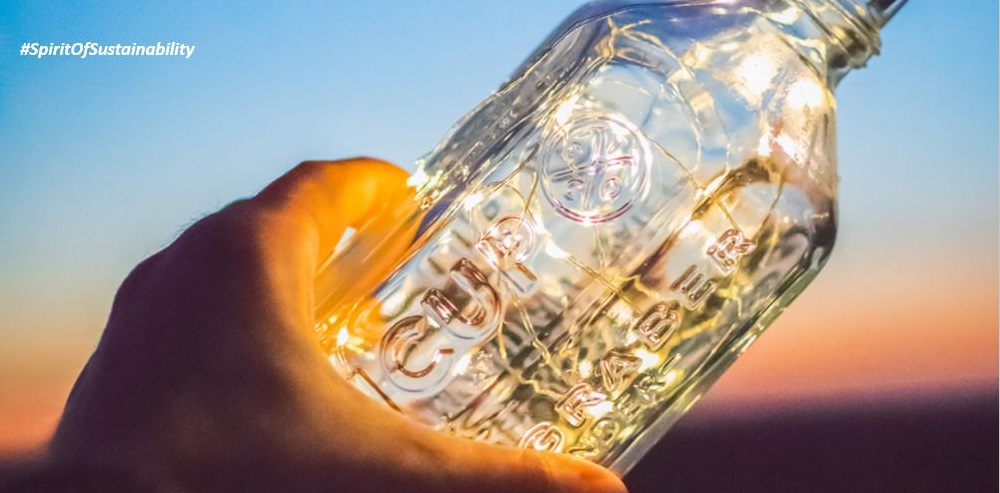
So you’ve had your drink and the bottle is empty, what now? Is it better to gather the bottles, return them to a production centre for cleaning and refilling, or it is better to collect them to be melted down and reshaped into new bottles? The dilemma of reusing versus recycling is a fundamental question EU policy-makers are trying to get right as part of the forthcoming Packaging and Packaging Waste Regulation (PPWR).
Somewhat surprisingly, a number of policymakers seem to believe that, by default, re-use is (always) best. Accordingly, they want to see rigid universal re-use targets imposed on all forms of glass packaging and products by 2030, with targets rising again by 2040.
However, looking at the full spectrum of different glass packaging products and solutions operating in the market today, the real answer to the question of whether re-use or recycling is best, actually is: it depends. In some instances, re-using a glass bottle is the best option for planet and people. In other instances, it’s not.
To be most efficient and environmentally sustainable, re-usable glass packaging should circulate quickly in high volumes within a limited geographical area (up to 200-300km) from producers to retailers to consumers – and back. In other words, re-use systems work best in high-speed, high-volume, and low-distance environments. In the drinks sector, this has been achieved for products such as beer, soft drinks, or mineral water.
Spirits, by contrast, structurally operate at the other end of this spectrum. The typical product journey for spirit bottles is marked by comparatively low-speed, low-volumes and larger distances. And, for a variety of reasons, these are category-inherent features that can’t and shouldn’t easily be changed – why?
Start by considering speed. Product lifecycles including use and consumption phases vary significantly between beverage types. Seen from this angle, spirits drinks constitute a specific category. In contrast to other beverages, spirits have a much longer average active life span and a much slower movement speed of the glass bottle. Once opened, a spirit drinks bottle can remain on the shelf for years, as unlike most other (alcoholic) beverages, the vast majority of spirits are virtually imperishable and do not deteriorate in quality once the packaging has been opened. Naturally, this unique feature expands the average active life span of glass bottles in the case of spirits considerably.
Spirits bottles are typically opened and closed numerous times over a considerable period of time for serving pours, something that is not the case for beers (single opening), and less so for wine. Accordingly, a bottle of spirit drink holding 22 individual servings (which must not be consumed by an individual consumer during a single drinking occasion) has, on average, a considerably longer active life span than, let’s say, a bottle of beer. In the latter case, the bottle is typically emptied within minutes of the first (and only) opening. With the occasional exception, for instance, in high-volume on-trade settings, this cannot and should not be achieved in the case for spirits bottles.
Volume-wise, spirit bottles represent a tiny share of the total glass bottle market. In a country like Germany, spirits represent a mere 1.3% of the total beverage glass market. Moreover, the spirits category in Europe is growing in value, not volume. Trends such as premiumisation mean that spirits consumers tend to drink better, not necessarily more. In line with this, during the past 15 years, spirits sales in the EU grew have continuously grown in value, while volumes sold are today markedly lower than in 2008.
Finally, consider distance. Take, for instance, the case of a premium whiskey, distilled and bottled in Ireland to be enjoyed in the south of Spain. Under mandatory re-use obligations, the same bottle could be made to travel back to its place of origin at the end of its (long) lifecycle. Alternatively, it could be collected for recycling in Spain, as 78% of glass packaging on the Spanish market already is. This is, no doubt, the preferable approach in terms of sustainability.
New packaging rules should therefore leave sufficient flexibility for different best-in-class solutions to co-exist. By contrast, uniform mandatory re-use/refill targets across all product categories would undermine such an approach and would, as in the case above, add to the environmental burden. By design, bottles for re-use/refill typically need to be somewhat sturdier and heavier to ensure highest levels of safety during the various (re-) use trips, again making the case of environmentally beneficial re-use schemes context-dependent.